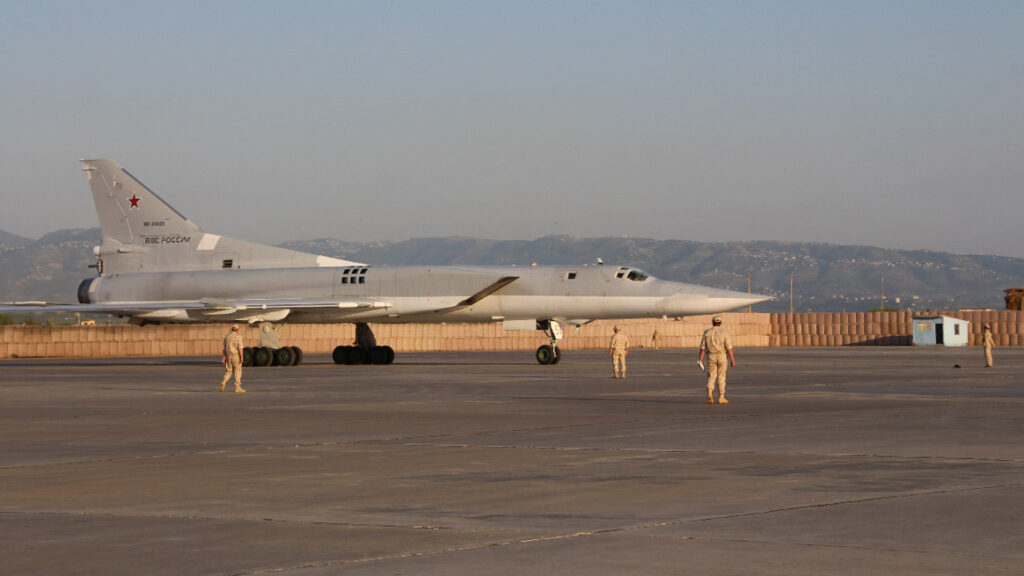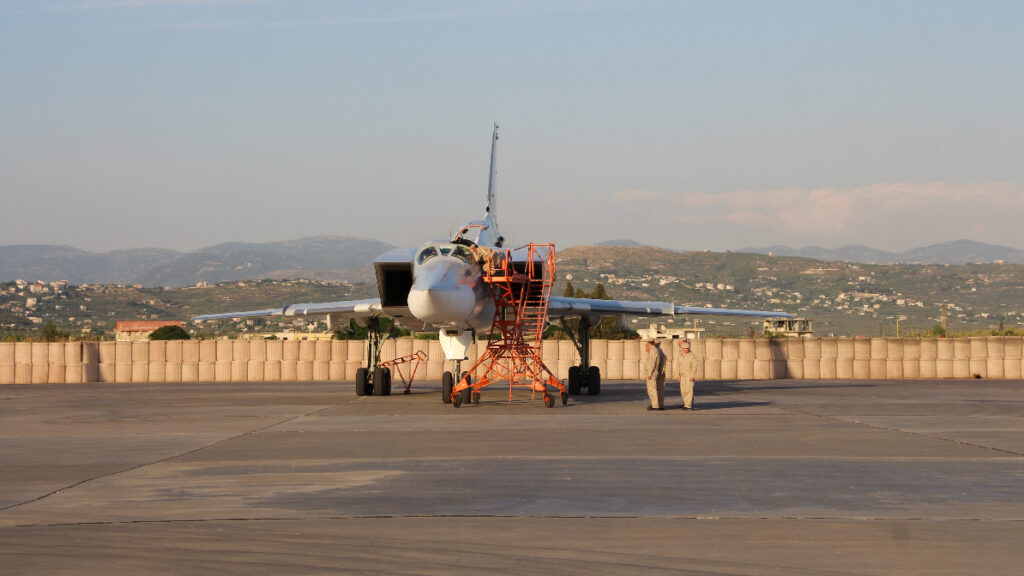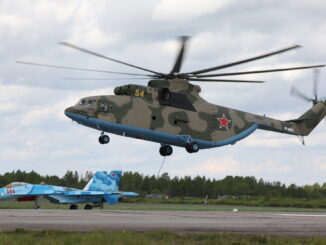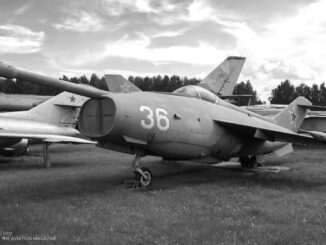 On 25th May 2021, the Ministry of Defence of the Russian Federation has informed about deployment of three strategic, nuclear-capable and long-range Tu-22M3 bombers (NATO reporting name: Backfire) to Syria.
On 25th May 2021, the Ministry of Defence of the Russian Federation has informed about deployment of three strategic, nuclear-capable and long-range Tu-22M3 bombers (NATO reporting name: Backfire) to Syria.
It is the very first time the nuclear strategic bombers were deployed to Syria, although the long-range aviation is operationally used within the Russian military intervention in the Syrian civil war yet since 2015. However, so far all missions were completed directly from air bases located on territory of the Russian Federation.
On 17th November 2015, a combat group of strategic bombers completed the very first mission against targets in Syria. It was a complex operation that involved five Tu-160, six Tu-95MS and fourteen Tu-22M3 aircraft, that flew a long-range route from Russian airfields, eight Su-34 fighter-bombers and four Su-27SM fighters providing escort duties over Syria and also one Beriev A-50 airborne early warning and control aeroplane.
According to information provided by the Russian MoD, during this first mission over Syria, the Tu-22M3 bombers have flown an approximately 4,510 kilometres long route and spent five hours and 20 minutes in the air. In the course of following years, Tu-22M3 aircraft performed several other long-distance air raids against targets in Syria.
Therefore, deployment of three ´Backfires´ to Syria (tactical numbers ´15´, ´28´ and ´50´) opens a new chapter for the Russian Aerospace Forces. Flying from Khmeimim, the Tu-22M3 are able to cover a wide area that could never be reached by ´Backfires´ operating from Russian air bases: the Mediterranean Sea (as far as Libyan or Sardinian coast), Arabian Peninsula, Red Sea and Arabian Sea, In addition, and their crews can get familiar with the region and its characteristics.
It must be noted here that Tu-22M3 bombers, although being a strategic and nuclear capable aircraft, have no ability of in-flight refuelling. Lack of such possibility, quite important for a long-range bomber, was a result of Strategic Arms Limitation Talks (SALT II) treaty, concluded in 1979. The refuelling probes have been removed from already manufactured Tu-22M aeroplanes and newly built bombers were not equipped with such installation (however the latest modification, designated as Tu-22M3M and currently being in a final test phase, would be equipped with air-to-air refuelling system).

Getting familiar with the Mediterranean area and being trained in performing aviation operations in hot climate conditions are among the main objectives of this deployment, the Russian MoD stated. Almost immediately after arriving to Syria, the crews of Tu-22M3 bombers began their training flights over the Mediterranean Sea.
A few photos and video materials being recently published at the Russian MoD official web site are clearly indicating that bombers deployed to Syria are performing an intensive training in anti-surface naval warfare. At least one Tu-22M3 was shown while carrying a Kh-22 long-range, anti-ship missile (Russian designation – Х-22 «Буря», NATO reporting name – AS-4 ´Kitchen´). This supersonic (reaching a speed of Ma 4.6) missile was developed in the early 1960s and initially intended to be used against NATO aircraft carriers and navy battle groups.
The Kh-22 missile has an operational range of 600 kilometres and, with addition to combat range of Tu-22M3 aircraft, allows the Russian bomber deployment to cover an area of entire Mediterranean Sea and even reach the Atlantic Ocean. Warhead of conventional Kh-22 can carry up to 1,000 kg of explosives but its nuclear variant has a thermonuclear load of up to 1,000 kilotons TNT. The missile can be launched in both high-altitude and low-altitude modes. With the high-altitude mode the Kh-22 can climb up to 27,000 metres and then dives into the target, in the low-altitude mode, the missile can cruise over the sea surface, at an altitude under 500 metres.
In addition, the Tu-22M3 have been recently modified to carry two other anti-ship missiles: Kh-32 (Х-32), being an upgraded variant of Kh-22 with extended range, altitude and cruise speed; and Kh-47M2 Kinzhal (Х-47М2 «Кинжал») nuclear-capable ballistic hypersonic missile. Although so far it was not disclosed if the strategic bombers being deployed to Syria were equipped also in any of those two new missiles.
According to official information, after gaining practical skills in performing missions in new geographic area, the crews and their aircraft will return to their home bases in Russia. Nevertheless, it is to be expected that this operation would not end with a single deployment. Especially that, in order to make it possible, there were several investments made to Khmeimim air base. They included reconstruction and extension of the second runway, complete replacement of its surface and installation of new light and radio equipment.
In addition, the MoD stated that now, after the abovementioned modernization, any type of aircraft from the Russian Aerospace Forces inventory – including the heavy bombers – can operate from Khmeimim air force base. This suggest that we are likely to witness further deployments of long-range aviation to Syria. And in the future they may also include Tu-160 or Tu-95 aircraft.

All photos and infographics © Russian MoD (Министерство обороны Российской Федерации), used under the Creative Commons Attribution 4.0 license. MoD press information were used.



